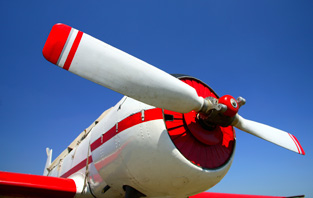
Putting the Pieces Together
Making Sense of the ASTM Aircraft Equipment Standards Activities
ASTM's aviation committees are coordinating their work on systems and equipment standards development.
When the aviation industry ventured into consensus standards development for aircraft types beyond light sport, it identified certain areas where existing ASTM International aviation standards committees overlapped with similar efforts. The formation of Committee F44 on General Aviation Aircraft, for example, has raised many questions about what work will be completed under which committee, particularly as it relates to aircraft systems and equipment. This article should provide some clarity regarding the division of labor between the new Committee F44 and the existing Committee F39 on Aircraft Systems.
Committee F39 develops and maintains component-level standards to be referenced by component designers and component manufacturers, and aircraft-level standards related to the design, certification, production, installation and/or maintenance of systems-related aircraft equipment. In addition to developing its own standards, Committee F39 also directly supports aircraft-level Committees F37 on Light Sport Aircraft, F38 on Unmanned Aircraft Systems, and now, Committee F44 on General Aviation Aircraft as needed on items of mutual interest.
The first standards developed by Committee F39 were for aircraft wiring systems, however, in 2012, the committee bylaws were amended to expand the scope to include any "independent system" standard deemed necessary to support general aviation. A new Committee F39 standard for angle of attack indicators should be released shortly; future standards expected to be developed by Committee F39 will encompass primary flight displays, wing-leveler technology and software validation standards for aircraft electronic systems.
In contrast, Committee F44 is an aircraft-level committee whose structure includes Subcommittee F44.50 on Systems and Equipment. The work of this subcommittee includes the development and maintenance of aircraft-level standards to be referenced by systems designers and aircraft manufacturers related to the design, certification, integration, operational requirements and continued airworthiness of systems and equipment at the aircraft level. Subcommittee F44.50 may choose to reference and rely on Committee F39 standards, government standards or independent component standards developed by other organizations. The first standards to be developed by Subcommittee F44.50 are expected to capture and organize the prescriptive elements of 14 CFR Part 23, Amendment 62,1 that have been extracted as part of the efforts of the recent Part 23 Aviation Rulemaking Committee. Future standards development may involve the absorption of relevant guidance material.
As industry evaluated the specific needs of different aircraft types, it determined that aviation was best served by maintaining Committee F39's work separate from the work of Subcommittee F44.50. The rationale for this decision is that Committee F44 is primarily focused on Part 23 aircraft, while the application of Committee F39 standards goes well beyond that of Part 23. Committee F39's work is also applicable to Committees F37, F38 and potentially many others. The goal of all of these technical committees is to work together to both reference and support each other's standards, keeping all relevant stakeholders active within the umbrella of ASTM International while acting as separate sub-entities. There are many advantages to this approach: it will permit increased productivity, reduce duplicative efforts and allow for focused content review while maintaining effective communication among stakeholders. Perhaps most important, this approach allows Committee F39's work to expand as necessary to meet new demands as the aviation industry continues to spread its wings.
Reference
1. Code of Federal Regulations, Title 14 – Aeronautics and Space, Part 23 - Airworthiness Standards: Normal, Utility, Acrobatic, and Commuter Category Airplanes.
David M. Stevens is manager of engineering services at Quest Aircraft Co., Sandpoint, Idaho. He is a member of Committee F44 on General Aviation Aircraft and chairman of Subcommittee F44.50 on Systems and Equipment.
Richard A. Peri is vice president of government and industry affairs at the Aircraft Electronics Association, Washington, D.C. He is a member of the ASTM International board of directors and of ASTM International Committees F37 on Light Sport Aircraft, F39 on Aircraft Systems and F44 on General Aviation Aircraft.
 SN Home
SN Home Archive
Archive Advertisers
Advertisers Masthead
Masthead RateCard
RateCard Subscribe
Subscribe Email Editor
Email Editor